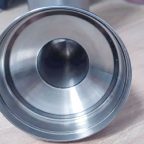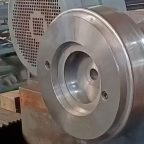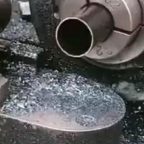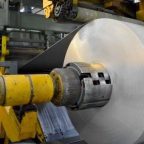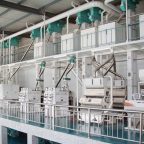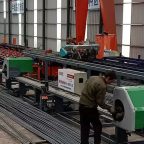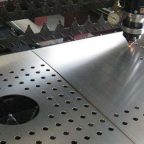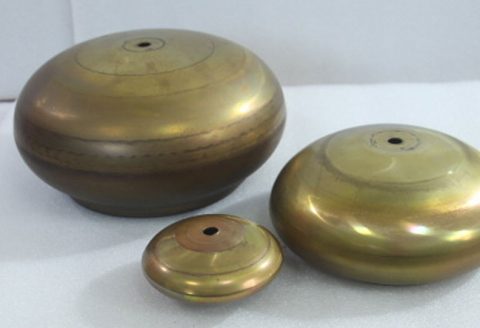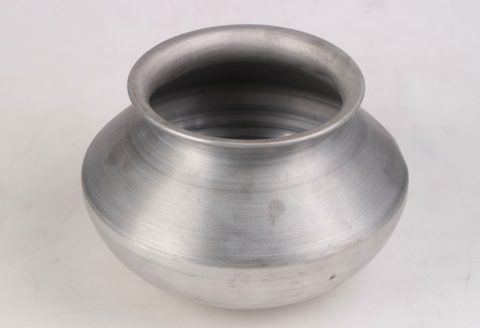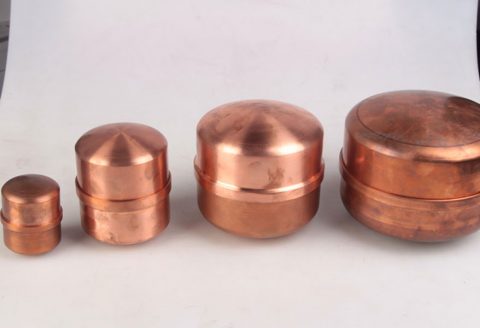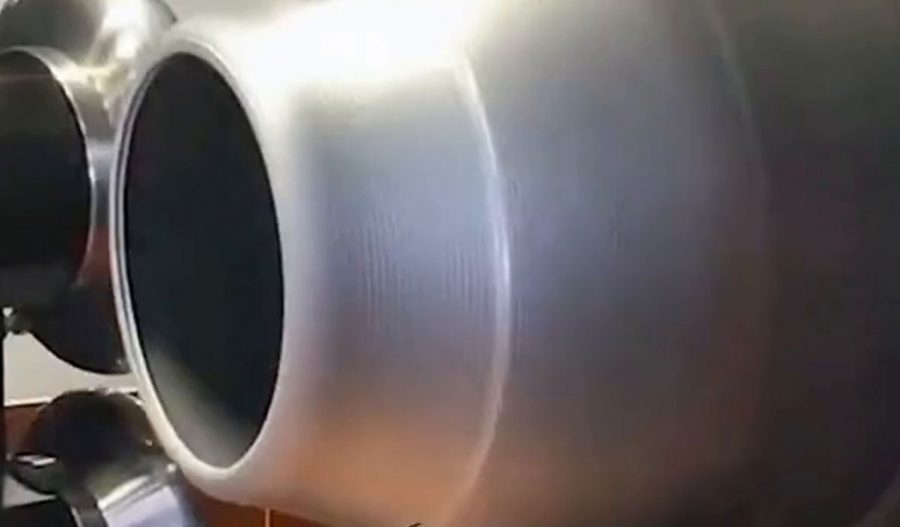
Dual-phase titanium alloys, such as the widely utilized Ti-6Al-4V, are cornerstone materials in high-performance applications, particularly in aerospace, biomedical, and automotive industries, due to their exceptional strength-to-weight ratio, corrosion resistance, and ability to withstand elevated temperatures. These alloys typically consist of a hexagonal close-packed (HCP) α phase and a body-centered cubic (BCC) β phase, with their mechanical properties heavily influenced by the interplay between these phases at their interfaces. The α/β phase boundary, a critical microstructural feature, governs deformation behavior, phase transformation kinetics, and overall material performance under complex loading conditions. Hot-spinning, a thermomechanical processing technique, subjects these alloys to composite loads—combining shear, tensile, and compressive stresses at elevated temperatures—making it an ideal process to study interfacial shear stability and phase boundary migration. This article provides a comprehensive exploration of the mechanisms underpinning interfacial shear stability and α/β phase boundary migration in dual-phase titanium alloys during hot-spinning, synthesizing recent research and presenting detailed comparative analyses through tables.
Hot-spinning involves the incremental deformation of a rotating workpiece using rollers, typically at temperatures within the α+β phase field (600–950°C for Ti-6Al-4V), to form rotationally symmetric components like conical or cylindrical parts. The process induces complex stress states, including shear stresses at the α/β interfaces, which can trigger dislocation glide, phase transformations, and boundary migration. Understanding these phenomena is crucial for optimizing the microstructure and mechanical properties of spun components, which are often used in critical applications such as aero-engine parts and medical implants. This article delves into the crystallographic, thermodynamic, and kinetic aspects of interfacial behavior, drawing on molecular dynamics (MD) simulations, in-situ experimental observations, and theoretical models to elucidate the underlying mechanisms.
Microstructural Characteristics of Dual-Phase Titanium Alloys
Phase Composition and Orientation Relationships
Dual-phase titanium alloys, such as Ti-6Al-4V, Ti-5Al-5Mo-5V-1Cr-1Fe (Ti55511), and Ti-10V-2Fe-3Al (Ti-1023), are characterized by a microstructure comprising α and β phases. The α phase, with its HCP crystal structure, provides strength and creep resistance, while the β phase, with its BCC structure, enhances ductility and toughness. The α/β phase boundary, where these phases interact, is governed by the Burgers orientation relationship (BOR): (0001)α//(110)β and [11-20]α//[1-11]β. This relationship minimizes interfacial energy by maximizing lattice coherency, but deviations from BOR, quantified as angular deviation (ΔBOR), can occur under thermomechanical processing, influencing slip transfer and boundary stability.
The microstructure of these alloys can adopt various morphologies—equiaxed, lamellar, or bimodal—depending on processing conditions. For instance, hot-spinning at temperatures below the β-transus (approximately 990°C for Ti-6Al-4V) typically results in a bimodal microstructure with equiaxed α grains surrounded by a β matrix. In contrast, processing above the β-transus followed by rapid cooling can produce a fully lamellar structure with α laths embedded in β grains. These morphologies significantly affect interfacial shear stability, as lamellar structures promote planar slip, while equiaxed structures facilitate more isotropic deformation.
Role of the α/β Interface
The α/β interface is a critical site for stress concentration, dislocation interactions, and phase transformations. It consists of habit planes, side facets, and end faces, each with distinct dislocation structures. The habit plane, typically aligned with low-index crystallographic planes, contains dislocations that accommodate lattice mismatch between the HCP α and BCC β phases. These dislocations, often with Burgers vectors such as b1 = 1/6<11-20>α or b2 = 1/2<111>β, facilitate shear-coupled migration, where interface motion is driven by dislocation glide under applied stress.
Interfacial shear stability refers to the ability of the α/β boundary to resist decohesion or excessive sliding under shear stresses. This stability is influenced by factors such as interface coherency, dislocation density, and solute segregation. During hot-spinning, the composite loads induce complex stress fields, promoting multi-slip systems and slip transfer across the interface. Slip bands initiated in the α phase can transfer into the β phase, activating slip systems like {110}<111>β or {112}<111>β, which alleviate incompatible deformation between adjacent grains.
Thermomechanical Processing and Hot-Spinning
Hot-spinning subjects the alloy to high strain rates (0.01–10 s⁻¹) and temperatures (600–950°C), inducing dynamic recrystallization (DRX), phase transformations, and interface migration. The process involves a rotating mandrel and rollers that apply localized shear and compressive forces, leading to incremental deformation. This results in a gradient microstructure, with regions near the roller contact experiencing higher strains and temperatures, promoting DRX and grain refinement, while regions farther away retain coarser grains.
The composite loads in hot-spinning—comprising shear, tension, and compression—create complex stress states that influence interfacial behavior. Shear stresses dominate at the α/β interface, driving dislocation glide and boundary migration, while compressive stresses can induce kinking or twinning. The elevated temperatures facilitate diffusion, enabling solute redistribution and phase transformations, such as β→α or α→β, depending on the cooling rate and alloy composition.
Interfacial Shear Stability Mechanisms
Dislocation-Mediated Shear
Interfacial shear stability is primarily governed by dislocation interactions at the α/β boundary. Molecular dynamics simulations reveal that semicoherent interfaces migrate via shear-coupled mechanisms, where dislocation glide along low-index planes (e.g., (0001)α or (110)β) induces boundary motion. The migration rate depends on dislocation spacing, glide direction, and thermal activation. For instance, in pure Ti, the migration of α/β interfaces is faster at higher temperatures due to increased dislocation mobility.
In dual-phase alloys, slip transfer across the α/β interface is quantified using the geometric compatibility factor (m′) and the composite Schmid Factor (CSF). High m′ values indicate favorable alignment of slip systems, facilitating slip transfer and reducing stress concentrations. For example, in Ti-6Al-4V, prismatic and basal slips dominate in the α phase, while {110}<111> and {112}<111> slips are prevalent in the β phase. Multi-slip under composite loads enhances α-β-α slip transfer, improving interfacial stability by distributing plastic deformation.
Role of Interface Dislocations
The α/β interface contains misfit dislocations that accommodate lattice mismatch. These dislocations, characterized by Burgers vectors, form a network that influences shear stability. In Ti-6Al-4V, the habit plane dislocations have Burgers vectors b1 = 1/6<11-20>α, while side facets may contain b2 = 1/2<111>β. Under shear stress, these dislocations glide, causing the interface to migrate in a direction normal to the shear plane. The spacing between dislocations, typically on the order of 5–20 nm, affects migration kinetics, with closer spacing leading to higher mobility.
In hot-spinning, the high shear stresses induce dislocation pile-ups at the interface, increasing local stress concentrations. These pile-ups can trigger dynamic recrystallization or phase transformations, such as the formation of stress-induced α″ martensite or ω phase, which further influence shear stability. For instance, in Ti-10V-2Fe-3Al, simultaneous twinning in α and β phases, along with α″ martensite formation at the interface, enhances shear resistance by introducing additional barriers to dislocation motion.
Thermodynamic and Kinetic Considerations
The stability of the α/β interface is also governed by thermodynamic factors, such as interfacial energy and Gibbs free energy differences between phases. The BOR minimizes interfacial energy, but deviations due to hot-spinning stresses can increase energy, promoting boundary migration. The Gibbs energy difference (ΔG) between α and β phases drives phase transformations, with ΔG influenced by temperature, alloy composition, and solute segregation. For example, vanadium enrichment in the β phase during sub-transus heat treatments increases β stability, affecting interface migration kinetics.
Kinetically, interface migration is a diffusion-controlled process at high temperatures, following Fick’s second law. Solute atoms, such as Al and V in Ti-6Al-4V, diffuse along the interface, facilitating boundary splitting or wedging of the β phase into α laths. This process is enhanced by the high dislocation density accumulated at the interface, which provides diffusion channels. In hot-spinning, the rapid deformation rates limit diffusion time, favoring shear-dominated mechanisms over diffusion-assisted ones.
α/β Phase Boundary Migration Behavior
Shear-Coupled Migration
Shear-coupled migration is a hallmark of α/β interface behavior under hot-spinning loads. Molecular dynamics studies show that interface dislocations glide in response to shear stresses, causing the boundary to move in a direction perpendicular to the shear plane. This process is characterized by a macroscopic shear strain, with the migration rate proportional to the applied shear stress and inversely related to dislocation spacing. In Ti-2.6 wt% Mo alloys, the habit plane of β precipitates contains two sets of dislocations, enhancing migration compared to single-dislocation systems in α laths.,
In hot-spinning, the composite loads induce multi-directional shear, complicating migration behavior. For instance, in Ti-6Al-4V, the interface migrates faster in regions of high shear strain near the roller contact, where dislocation glide is most active. The migration direction is influenced by the orientation of the interface relative to the principal stress axes, with low-index planes like (0001)α//(110)β exhibiting higher mobility due to lower activation energy.
Influence of Temperature and Strain Rate
Temperature plays a critical role in interface migration. At hot-spinning temperatures (600–950°C), thermal activation enhances dislocation glide and solute diffusion, accelerating boundary motion. For example, in Ti-6Al-4V, migration rates increase exponentially with temperature, following an Arrhenius relationship. However, above the β-transus, the α phase dissolves, and rapid cooling can induce martensitic transformations (β→α′ or β→α″), altering interface characteristics.
Strain rate also affects migration. High strain rates (1–10 s⁻¹) in hot-spinning promote shear-dominated mechanisms, such as dislocation glide and twinning, over diffusion-controlled processes. In Ti-10V-2Fe-3Al, high strain rates induce simultaneous twinning in α and β phases, with α″ martensite forming at the interface, which restricts boundary migration by increasing lattice strain. Conversely, lower strain rates allow more time for diffusion, promoting boundary splitting and globularization.
Phase Transformations and Interface Evolution
Hot-spinning induces phase transformations that influence interface migration. For example, rapid cooling from the β phase field can result in the formation of secondary α (αs) or α″ martensite, which alters the interface structure. In Ti-6Al-4V, cooling rates of 100°C/s (water quenching) produce lamellar α′ martensite, while slower rates (0.1°C/s, furnace cooling) favor diffusion-assisted α precipitation. These transformations affect interface mobility, with martensitic interfaces exhibiting higher resistance to migration due to increased lattice strain.
In Ti2AlNb-based alloys, hot-spinning induces the formation of acicular secondary O phases and spheroidized α2 phases, which interact with the α/β interface. The presence of these phases can pin the interface, reducing migration rates but enhancing shear stability by introducing additional obstacles to dislocation motion. Post-spinning heat treatments, such as 960°C/2 h + 850°C/12 h, further modify the interface by promoting recrystallization and phase redistribution, improving ductility.
Hot-Spinning Process Parameters and Their Effects
Temperature Effects
Hot-spinning temperatures typically range from 600°C to 950°C, within the α+β phase field for most dual-phase titanium alloys. At lower temperatures (600–750°C), the α phase dominates, and interface migration is limited by low dislocation mobility and diffusion rates. At higher temperatures (800–950°C), closer to the β-transus, the β phase fraction increases, enhancing interface mobility due to increased thermal activation and solute diffusion. For Ti-6Al-4V, spinning at 900°C results in a bimodal microstructure with fine α grains and a continuous β matrix, optimizing shear stability and mechanical properties.
Strain Rate Effects
Strain rates in hot-spinning vary depending on roller speed and workpiece rotation. High strain rates (1–10 s⁻¹) induce dynamic recrystallization and shear-dominated interface migration, leading to grain refinement and texture development. For example, in Ti2AlNb alloys, high strain rates during multi-pass spinning change the B2 phase texture from <111>//ND to <001>//ND, enhancing tensile strength. Lower strain rates (0.01–0.1 s⁻¹) allow more time for diffusion, promoting globularization and reducing interfacial shear stresses.
Composite Load Effects
The composite loads in hot-spinning—shear, tension, and compression—create a complex stress field that influences interface behavior. Shear stresses drive dislocation glide and boundary migration, while compressive stresses can induce kinking or twinning, particularly in the α phase. Tensile stresses promote crack initiation at α/β interfaces, especially in regions with high stress concentrations, such as the heat-affected zone (HAZ) in hybrid-manufactured alloys. The interplay of these stresses determines the extent of plastic deformation and phase transformation, with shear-dominated regions exhibiting higher interface mobility.
Experimental and Simulation Insights
In-Situ Observations
In-situ techniques, such as transmission electron microscopy (TEM) and electron backscatter diffraction (EBSD), provide real-time insights into interfacial behavior during hot-spinning. In Ti-10V-2Fe-3Al, in-situ TEM reveals that dislocations prefer to transmit along the longitudinal axis of α plates, with α-α junctions acting as stress concentration sites that facilitate slip transfer. This mechanism enhances shear stability by distributing plastic deformation across multiple phases.,
In Ti-6Al-4V, in-situ EBSD during hot compression shows that α/β interfaces undergo dynamic recrystallization, with subgrain formation in both phases leading to boundary grooving and globularization. The process disrupts the BOR, increasing interfacial energy and promoting migration. These observations highlight the role of local stress concentrations in driving interface evolution.
Molecular Dynamics Simulations
Molecular dynamics simulations provide atomic-scale insights into interface migration. In pure Ti, simulations reveal that shear-coupled migration is driven by the glide of interface dislocations, with the migration rate dependent on temperature and dislocation spacing. In Ti-Cr alloys, simulations validate the crystallographic features of surface α precipitates, showing that low-energy interfaces with specific orientations are favored during migration. These findings are consistent with experimental observations of interface mobility in Ti-6Al-4V under hot-spinning conditions.
Crystal Plasticity and Phase-Field Modeling
Crystal plasticity finite element–phase-field (CPFE-PF) models simulate the onset of dynamic recrystallization and interface migration in dual-phase titanium alloys. These models account for dislocation density, shear rate, and Schmid factors, revealing that nucleation of new grains occurs preferentially at α/β interfaces with high dislocation densities. In Ti-6Al-4V, CPFE-PF simulations show that prismatic and basal slips in the α phase correlate with nucleation propensity, driving boundary migration during hot-spinning.
Mechanical Property Implications
Strength and Ductility
The interfacial shear stability and α/β phase boundary migration significantly influence the mechanical properties of hot-spun titanium alloys. High shear stability, achieved through dislocation-mediated mechanisms and phase transformations, enhances tensile strength by impeding crack propagation. For example, in Ti2AlNb alloys, the formation of spheroidized α2 phases during post-spinning heat treatment increases ductility to 72.1% at 900°C, while maintaining a tensile strength of 1163 MPa at 650°C.
In Ti-6Al-4V, a bimodal microstructure formed during hot-spinning at 900°C achieves a balance of strength (965 MPa) and ductility (14.8%), attributed to the synergistic effect of fine α grains and a continuous β matrix. The presence of secondary α (αs) and discontinuous grain boundary α (GB-α) further enhances strength by impeding dislocation motion, while improving ductility by inhibiting crack initiation.,
Fracture Toughness and Fatigue
Interfacial shear stability affects fracture toughness by influencing crack initiation and propagation. In near-β titanium alloys like Ti55531, fine secondary α precipitates and discontinuous GB-α inhibit crack initiation, improving fracture toughness. However, large β grains can reduce toughness due to stress concentrations at grain boundaries. Hot-spinning refines the microstructure, reducing β grain size and enhancing toughness.
Fatigue life is also influenced by interfacial behavior. The coarse prior-β grain structure in additively manufactured Ti-6Al-4V leads to mechanical anisotropy and limited fatigue life. Hot-spinning induces dynamic recrystallization, refining β grains and improving fatigue resistance by reducing stress concentrations at α/β interfaces.
Comparative Analysis and Tables
Table 1: Microstructural Characteristics of Dual-Phase Titanium Alloys
| Alloy | Composition (wt.%) | Microstructure Type | α Phase Morphology | β Phase Morphology | BOR Compliance | Key Reference |
|---|---|---|---|---|---|---|
| Ti-6Al-4V | 6Al, 4V, Bal. Ti | Bimodal, Lamellar | Equiaxed, Laths | Continuous Matrix | High (ΔBOR < 5°) | |
| Ti-10V-2Fe-3Al | 10V, 2Fe, 3Al, Bal. Ti | Bimodal | Plates, Laths | Equiaxed Grains | Moderate (ΔBOR 5–10°) | |
| Ti2AlNb | 22Al, 25Nb, Bal. Ti | Lamellar, Spheroidized | Acicular, Spheroidized | B2 Matrix | Low (ΔBOR > 10°) | |
| Ti55511 | 5Al, 5Mo, 5V, 1Cr, 1Fe | Bi-lamellar | Primary/Secondary α | Elongated Grains | High (ΔBOR < 5°) |
Description: This table compares the microstructural characteristics of key dual-phase titanium alloys, highlighting phase morphologies and BOR compliance, which influence interfacial shear stability and boundary migration.
Table 2: Interfacial Shear Stability Mechanisms
| Mechanism | Description | Key Features | Effect on Stability | Alloy Example | Reference |
|---|---|---|---|---|---|
| Dislocation Glide | Shear-coupled migration via dislocation glide along low-index planes | Burgers vectors b1 = 1/6<11-20>α, b2 = 1/2<111>β | Enhances stability | Ti-6Al-4V | |
| Slip Transfer | Transfer of slip bands from α to β phase | High m′ and CSF values | Improves stability | Ti-10V-2Fe-3Al | |
| Phase Transformation | Formation of α″ martensite or ω phase at interface | Increases lattice strain, impedes dislocation motion | Enhances stability | Ti-10V-2Fe-3Al | |
| Boundary Splitting | β phase wedging into α laths via diffusion | Driven by solute concentration gradients and dislocation density | Reduces stability | Ti-6Al-4V |
Description: This table summarizes the mechanisms contributing to interfacial shear stability, detailing their effects and relevance to specific alloys.
Table 3: α/β Phase Boundary Migration Parameters
| Parameter | Influence | Typical Values | Effect on Migration | Alloy Example | Reference |
|---|---|---|---|---|---|
| Temperature | Increases dislocation mobility and diffusion | 600–950°C | Accelerates migration | Ti-6Al-4V | |
| Strain Rate | High rates favor shear-dominated migration | 0.01–10 s⁻¹ | Accelerates migration | Ti2AlNb | |
| Dislocation Spacing | Closer spacing increases migration rate | 5–20 nm | Enhances migration | Ti-2.6Mo | |
| Solute Segregation | Al, V diffusion along interface affects kinetics | V enrichment in β phase | Slows migration | Ti-6Al-4V |
Description: This table outlines key parameters affecting α/β phase boundary migration, including their typical values and effects on migration kinetics.
Applications and Future Directions
Aerospace and Biomedical Applications
The insights gained from studying interfacial shear stability and α/β phase boundary migration in hot-spinning are critical for aerospace applications, such as turbine blades and structural components, where high strength and fatigue resistance are paramount. In biomedical implants, the ability to tailor microstructure through hot-spinning enhances biocompatibility and mechanical performance. For instance, Ti-6Al-4V implants with bimodal microstructures exhibit improved osseointegration due to their balanced strength and ductility.
Future Research
Future research should focus on developing advanced in-situ characterization techniques, such as high-temperature EBSD and synchrotron X-ray diffraction, to capture real-time interface dynamics during hot-spinning. Additionally, integrating machine-learned interatomic potentials into MD simulations can improve the accuracy of interface migration models, particularly for complex alloys like Ti2AlNb. Exploring the role of alloying elements, such as Mo and Nb, in stabilizing interfaces under composite loads is another promising direction. Finally, optimizing hot-spinning parameters through machine learning and process modeling can enhance microstructural control and mechanical performance.
Maximize Tooling and CNC Metal Spinning Capabilities.
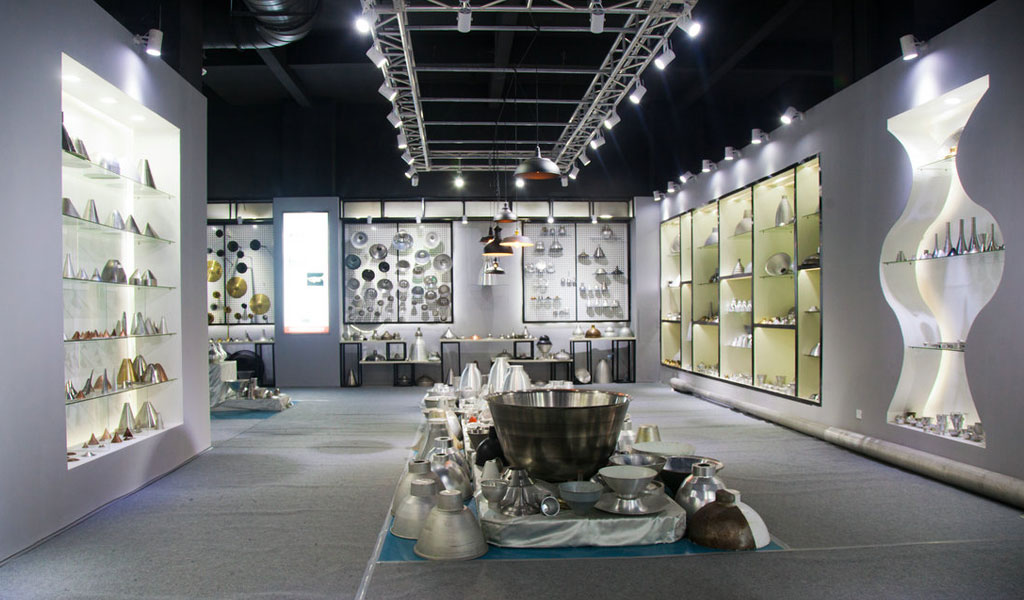
At BE-CU China Metal Spinning company, we make the most of our equipment while monitoring signs of excess wear and stress. In addition, we look into newer, modern equipment and invest in those that can support or increase our manufacturing capabilities. Our team is very mindful of our machines and tools, so we also routinely maintain them to ensure they don’t negatively impact your part’s quality and productivity.
Talk to us today about making a rapid prototype with our CNC metal spinning service. Get a direct quote by chatting with us here or request a free project review.
BE-CU China CNC Metal Spinning service include : CNC Metal Spinning,Metal Spinning Die,Laser Cutting, Tank Heads Spinning,Metal Hemispheres Spinning,Metal Cones Spinning,Metal Dish-Shaped Spinning,Metal Trumpet Spinning,Metal Venturi Spinning,Aluminum Spinning Products,Stainless Steel Spinning Products,Copper Spinning Products,Brass Spinning Products,Steel Spinning Product,Metal Spinnin LED Reflector,Metal Spinning Pressure Vessel,
